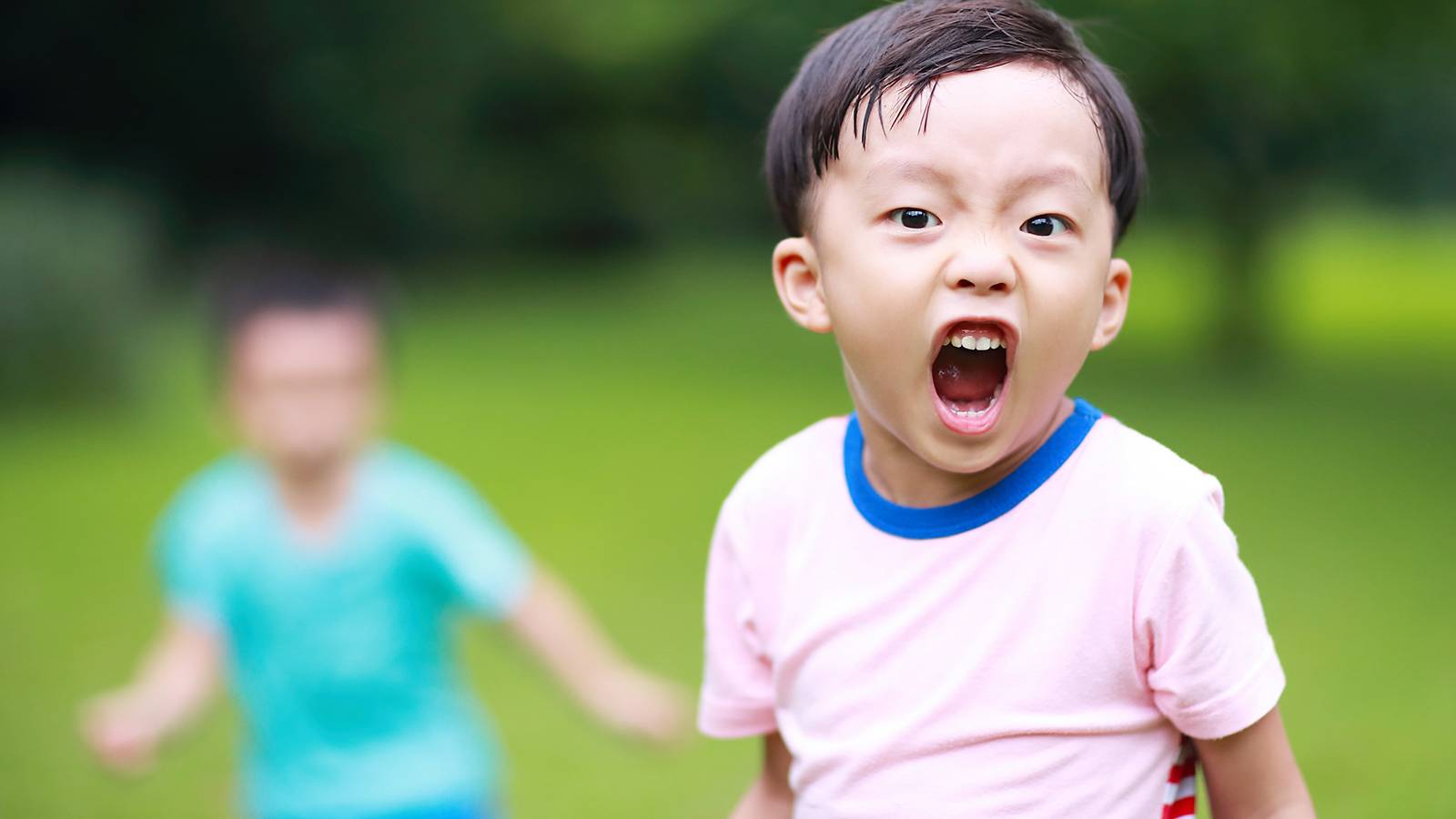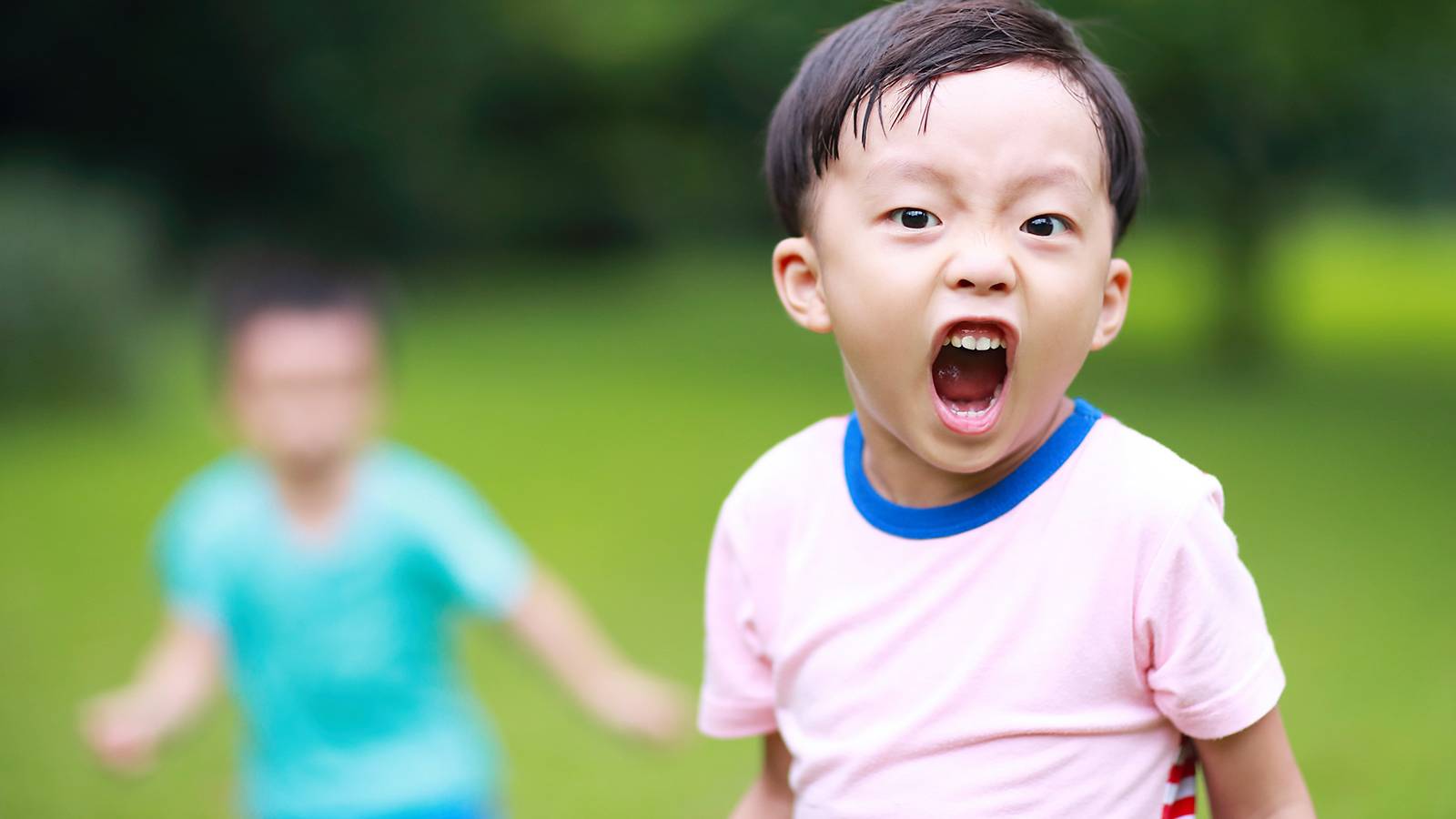Playground disputes can upset both kids and their parents. An expert has tips on how to handle such clashes…

It’s a common but much-dreaded scenario ― a child wants to play with a certain toy or piece of equipment at a playground, but another is still enjoying himself on it.
The first child thinks, “I want it!” and makes a grab for it, which causes the other child to lose his grip. Both then try snatching it from each other. Sooner or later, one starts screaming, the other is in tears, which sees the parents come running over.
Disputes between young children are bound to happen, whether you are at the playground, on a playdate, or even just while waiting at the doctor.
But how do you react? Do you wade in immediately, or do you sit back and see how the tots figure things out for themselves? Also, how do you teach junior to respond when such a conflict occurs?
Says Jeanie Chu, a clinical psychologist at The Resilienz Clinic, “Learning to handle conflicts in an appropriate and productive manner can help to enhance social skills and prepare children to handle interpersonal issues later in life.”
It enhances their sense of empathy, as well as develops decision-making skills, since it requires good communication, listening and problem-solving skills. She adds, “It also develops their self-confidence in the process of solving interpersonal problems in a positive and assertive manner.”
Expressing how they feel can help foster understanding of their own, and the other party’s emotions.
One thing parents can do is to guide kids through sticky situations at the playground. Here are some steps you can follow
* Cool off and calm down
Kids, especially, the younger ones, tend to react before they think, Chu notes. Parents can teach them to break away from the conflict when it gets heated by suggesting cooling-off methods. She points out, “These include walking away, counting to 10 or more, and teaching relaxation techniques such as deep breathing to calm down.”
* Make sense
Parents may need to spell out specifically what the problem is, especially if the children are younger. Talk to each child, either together or separately, then help them to state the problem. Chu explains, “It’s important to emphasise honesty and encourage acknowledgement on their part. Highlight that it takes two hands to clap in a conflict.” She advises parents get their children to use “I” statements during the process of stating the problem, to encourage them to take responsibility for the contribution to the conflict. Expressing how they feel can help them better understand what they did, as well as the other party’s emotions.
* Apologise
Regardless of whether they started the dispute or not, it’s a good idea to teach your child what an apology is, and how to apologise. “A good apology entails remorse, responsibility, remedy and reconciliation,” says Chu. You can guide a younger child to come up with astatement of apology.
* Find a solution
Chu suggests encouraging children to brainstorm solutions to the conflict. “Ideally, this should be done together with both parties in the conflict, to reach a compromise.” If this can’t be done, parents can guide the children in a self-reflection process. She adds, “Think about what went wrong and how situations like this can be avoided in the future.”
How do you respond when another child hurts yours on purpose? One mum shares her experience… next!

Jaclyn Lee, mum to Kayla, 3, was quite taken aback when a young boy shoved her little girl off a climbing structure at a shopping mall.
“He was quite young, maybe 3 or 4, so I had to give him the benefit of the doubt. Plus, Kayla wasn’t hurt, so I left it as that,” she recalls.
Jaclyn then sat down on a bench near the play area, so that she could keep an eye on her daughter. When Kayla started climbing up some steps to go down a slide, Jaclyn saw the same boy rush towards her child and push her aside. When Kayla fell two steps to the floor, she burst into tears ― the boy simply laughed and went down the slide.
Says Jaclyn, who was seething with anger by then, “I saw the entire incident happen, though I was not close enough to prevent it. It took all my will power not to scream at him.”
On finding the boy’s mother, the other woman promptly apologised. But Jaclyn still feels that the boy needed to learn how to behave at the playground. “Even though there was an apology, I felt that the parents really needed to teach him proper social behaviour, especially with other kids around,” she says. “It’s not my place to tell another parent how to parent her child, so I left it at that.”
So, when should parents step in?
Chu acknowledges, “This can be very tricky. Ideally, parents should allow their children to handle their own conflicts as far as possible, as this will allow them to learn experientially and not be overly-reliant on parents.”
But parent should intervene when clear boundaries are crossed, such as in situations when children are physically and/or verbally aggressive. She notes, “Parents should always make it clear to children that aggression is not an appropriate way to resolve conflicts. Any form of aggression, whether physical or verbal, should be discouraged.” Chu suggests guiding the children to calm down, who should then be asked to settle the conflict.
While it’s our parental instinct to instigate protection for our child, it’s best not to jump to the rescue immediately.
Chu adds that while it’s instinctive to want to protect our child, we should try not to jump to the rescue immediately. “Allowing your child to handle his or her own problems will help them learn to assess the situation, train them to consider options and exercise judgement, and develop their decision-making skills.”
Should you make a child apologise?
Chu points out that remorse and sincerity are essential parts of an apology. “With this notion in mind, making a child apologise may then be counterproductive, especially if it’s not intrinsically motivated.”
In addition, while the instigator of the conflict is expected to apologise, a conflict always involves two parties. “More importantly, parents should encourage their child to reflect on his or her contribution to the conflict,” Chu advises.
What if a child seems to be bullying others?
Parents should not jump straight to conclusions, but should, instead, observe the so-called “bully’s” behaviour. After that, clarify the situation with your child (or other kids) who have interacted with the child. This is because play and accidental play can be mistaken for bullying.
If physical or verbal aggression is apparent, separate the aggressor from the other children. If you are going to approach the aggressor or his parents, Chu suggests taking these steps:
* State the problem and your understanding of the situation;
* Clarify any misinterpretation of the situation;
* Elicit empathy by stating how the aggressor’s behaviour is hurting others;
* Work to promote an adaptive manner to resolve the conflict that should ideally include an apology.
Chu advises, “Allow time for both parties to cool down before approaching the aggressor or his parents.”
Photos: iStock
You’d love these reads, too…
